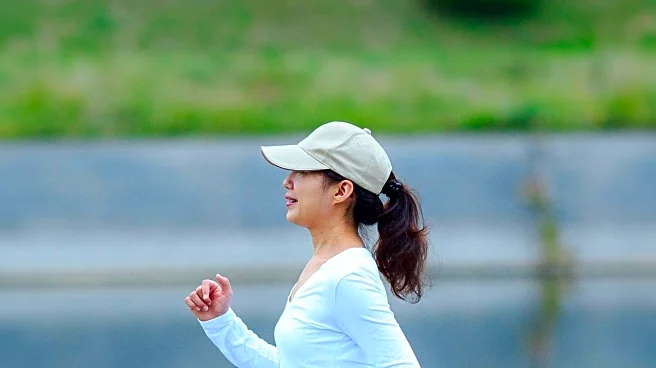What's Happening?
The Japanese walking method, also known as interval walking training, has become a viral trend, capturing attention for its health benefits. This structured walking method involves alternating between three minutes of fast-paced walking and three minutes of slower recovery-paced walking, repeated for about 30 minutes. Originating from research by Professor Hiroshi Nose and Associate Professor Shizue Masuki at Shinshu University, the method has shown significant improvements in cardiovascular fitness, muscular strength, and aerobic capacity. It is particularly beneficial for older adults, offering a low-impact exercise option that enhances endurance and cardiovascular health.
Why It's Important?
The Japanese walking method is significant as it provides a simple yet effective way to improve health without the need for intense workouts or equipment. It is accessible to a wide range of people, including those who are new to exercise or recovering from injuries. The method's ability to improve cardiovascular health, lower blood pressure, and increase leg strength makes it a valuable tool for managing health and preventing chronic diseases. Its popularity on social media platforms like TikTok highlights a growing interest in accessible fitness routines that can be easily integrated into daily life.
What's Next?
As the Japanese walking method continues to gain traction, it is likely to be adopted by more fitness enthusiasts and health professionals as a recommended exercise routine. The method's simplicity and effectiveness may lead to further research and adaptations, potentially incorporating mindfulness or other health-promoting practices. Fitness influencers and trainers may develop new programs based on this method, expanding its reach and impact on public health.
Beyond the Headlines
The Japanese walking method reflects a broader trend towards mindful and accessible fitness practices. It emphasizes the importance of consistency and routine in maintaining health, aligning with cultural practices that prioritize regular movement and mindfulness. This approach to exercise may inspire a shift away from high-intensity workouts towards more sustainable and holistic health practices.











